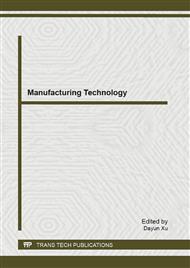p.356
p.360
p.366
p.372
p.377
p.383
p.389
p.396
p.402
Approach of Combination of Weighted Evidence Based on Evidential Closeness Degree and its Application
Abstract:
Since the information fusion based on Dempster-Shafer(D-S) evidence theory involves counter-intuitive behaviors when evidences highly conflict, a new approach of combination of weighted based on evidence closeness degree is proposed and applied in fault diagnosis.Firstly, the calculation method of evidence distance and evidential closeness degree as well as its revision are given according to the relevance and importance of various evidence sources; Then the closeness degree is normalized in order to obtain the weights of evidence sources. And the information fusion is realized with the base of weighted evidence theory. Finally, the approach is applied to fault diagnosis model of multi-evidences (multi-symptom domains or multi-sensors) in this paper. In the experiments, the proposed approach is compared with the existing combination rules and the results show that the reliability and accuracy of fault diagnosis are significantly improved and its uncertainty is decreased remarkably. The fusion problem given above is also solved effectively.
Info:
Periodical:
Pages:
377-382
Citation:
Online since:
December 2012
Authors:
Price:
Сopyright:
© 2013 Trans Tech Publications Ltd. All Rights Reserved
Share:
Citation:


